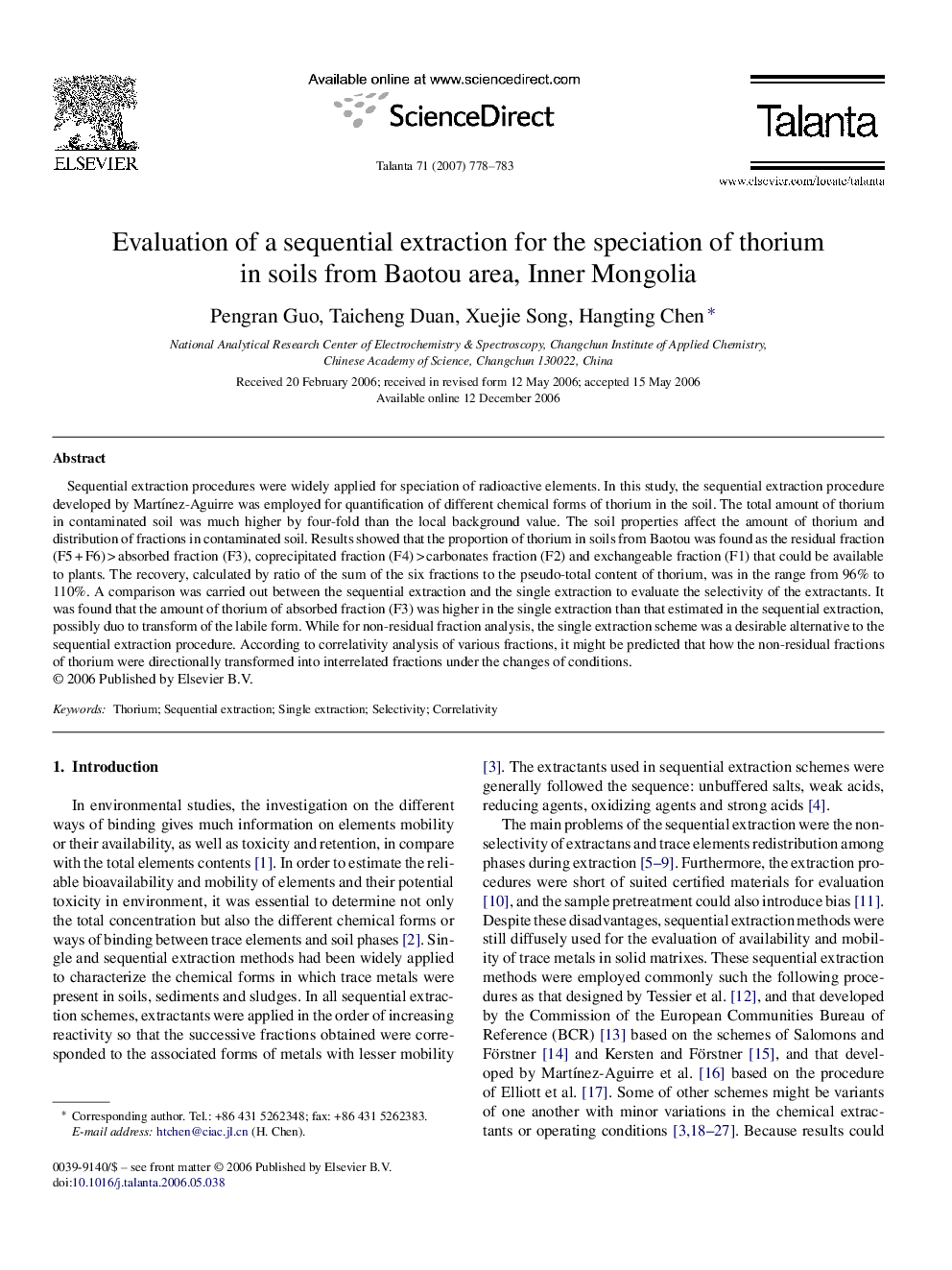| Article ID | Journal | Published Year | Pages | File Type |
|---|---|---|---|---|
| 1244252 | Talanta | 2007 | 6 Pages |
Sequential extraction procedures were widely applied for speciation of radioactive elements. In this study, the sequential extraction procedure developed by Martínez-Aguirre was employed for quantification of different chemical forms of thorium in the soil. The total amount of thorium in contaminated soil was much higher by four-fold than the local background value. The soil properties affect the amount of thorium and distribution of fractions in contaminated soil. Results showed that the proportion of thorium in soils from Baotou was found as the residual fraction (F5 + F6) > absorbed fraction (F3), coprecipitated fraction (F4) > carbonates fraction (F2) and exchangeable fraction (F1) that could be available to plants. The recovery, calculated by ratio of the sum of the six fractions to the pseudo-total content of thorium, was in the range from 96% to 110%. A comparison was carried out between the sequential extraction and the single extraction to evaluate the selectivity of the extractants. It was found that the amount of thorium of absorbed fraction (F3) was higher in the single extraction than that estimated in the sequential extraction, possibly duo to transform of the labile form. While for non-residual fraction analysis, the single extraction scheme was a desirable alternative to the sequential extraction procedure. According to correlativity analysis of various fractions, it might be predicted that how the non-residual fractions of thorium were directionally transformed into interrelated fractions under the changes of conditions.
